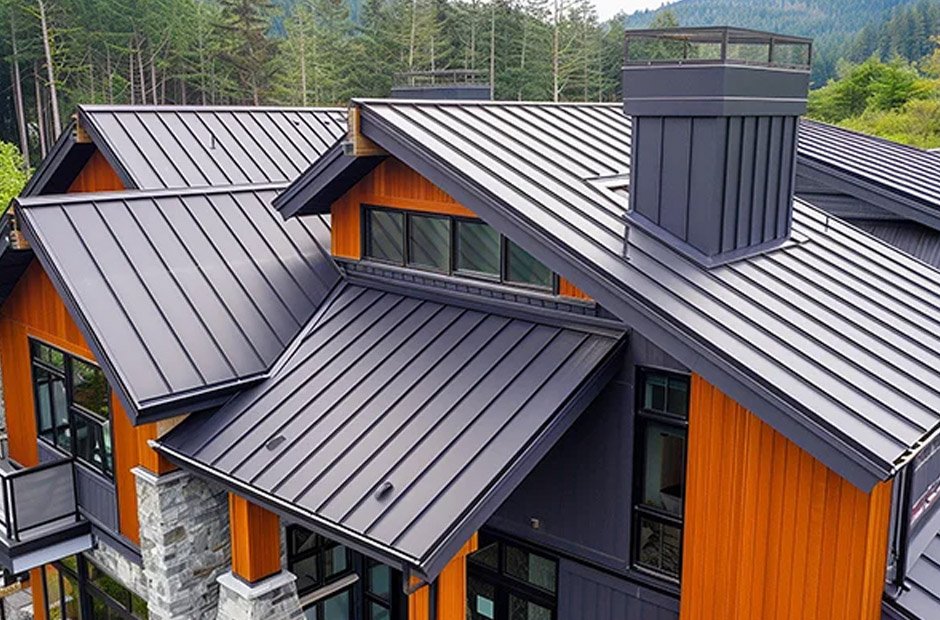Key Takeaways
- Metal roofs offer exceptional durability, often lasting 50 years or more.
- They provide superior resistance to extreme weather conditions, including hail and high winds.
- Metal roofing is an environmentally friendly option due to its recyclability and energy efficiency.
Introduction
Today’s homeowners are seeking building materials that promise more than just aesthetic appeal, as they want materials that offer longevity, resilience, and sustainability. In recent years, metal roofing has gained prominence, thanks to its unique blend of these qualities. Whether you’re building new or considering a future renovation, metal roofing stands out as a robust investment that delivers returns for decades to come. Those interested in installation can find local experts like this Metal Roofer in Charlotte, who can provide insight and service tailored to their region’s specific needs. Particularly in areas facing unpredictable weather or extreme climates, the need for reliable protection is paramount. Metal roofs are engineered to withstand a wide range of challenges that other materials may not, such as heavy storms, flying debris, and even fire risks. Their growing popularity signals a shift toward smarter, more sustainable home improvement choices.
Unlike traditional options such as asphalt shingles or wooden shakes, metal roofing integrates advanced engineering with time-tested durability, making it a sought-after solution for both residential and commercial properties as more homeowners and developers prioritize long-term value over short-term fixes, the advantages of metal roofing become even more evident. The blend of practicality, savings, and eco-consciousness has placed metal roofs at the forefront of roofing technology. Let’s break down why this material continues to stand the test of time in both performance and popularity, and how it benefits both your home and the broader environment.
Durability and Longevity
Metal roofs are synonymous with endurance. Materials such as steel, aluminum, copper, and zinc are highly resilient against environmental stressors. A well-installed metal roof can last between 40 and 70 years, significantly outpacing the life expectancy of standard roofing shingles, which often require replacement every 15 to 20 years. Homeowners who choose metal roofs are effectively reducing the chances of needing a premature replacement due to rot, insect damage, or mold. The investment might seem substantial upfront, but the peace of mind that comes with long-term performance far outweighs the costs.
Weather Resistance
Weather can be a roof’s fiercest adversary, but not for metal. Metal roofing systems are designed to withstand hail, repel water, and resist wind gusts exceeding 120 mph. This robustness is especially critical for homes located in regions susceptible to hurricanes, hailstorms, or wildfires. Beyond physical defense, metal roofs are non-combustible, contributing an essential layer of fire protection. According to the Consumer Reports roofing guide, metal is among the few roofing options that consistently receive top marks for their performance under extreme conditions.
Energy Efficiency
Energy costs are a major concern for homeowners, especially as climate patterns shift. Metal roofs address this by reflecting solar heat instead of absorbing it, keeping interiors cooler during hot weather. The U.S. Department of Energy notes that this reflective property can reduce summer cooling costs by 10% to 15%. Some metal roofing systems feature integrated coatings or specialized finishes that enhance energy efficiency, resulting in a noticeable reduction in utility bills and improved overall household comfort.
Environmental Impact
Sustainability is an essential consideration for today’s households. Metal roofing solutions often include recycled metal content and are themselves 100% recyclable at the end of their long lifespan. This stands in contrast to asphalt shingles, which usually end up in landfills. By reducing the demand for new raw materials and minimizing waste, metal roofs make a strong case as a green building solution. Their energy-saving characteristics further reduce the home’s carbon footprint, aligning with the goals of environmentally conscious homeowners.
Maintenance Requirements
Another significant benefit of metal roofing is its low maintenance requirements. These systems require only basic upkeep, such as routine inspections and occasional cleaning to remove debris. Unlike other roofing types that may need frequent patching or shingle replacement, metal resists moss, fungus, and termite infestations. This simplicity ensures lasting durability with little ongoing effort from homeowners.
Cost-Effectiveness
While the upfront installation cost of a metal roof can be higher than that of asphalt or wood, this expense is offset by substantial long-term savings. Minimal repair needs, infrequent replacement cycles, lower energy bills, and potential home insurance discounts all contribute to making metal roofing a sound economic choice in the long run. Some insurance providers offer reduced premiums for homes with metal roofs due to their exceptional durability and weather resistance, which further reduces total ownership costs.
Conclusion
Metal roofs capably deliver a combination of superior protection, long-term savings, and sustainability that few alternatives can match. Their resistance to harsh weather, enduring strength, minimal maintenance needs, and environmental benefits position them as a leading choice for modern homeowners. As demand for durable and eco-friendly building materials grows, metal roofing’s standout characteristics ensure it will continue to stand the test of time for future generations.



